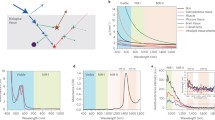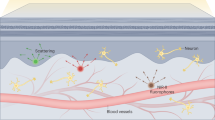Abstract.
A recent development in biomedical imaging is the non-invasive mapping of molecular events in intact tissues using fluorescence. Underpinning to this development is the discovery of bio-compatible, specific fluorescent probes and proteins and the development of highly sensitive imaging technologies for in vivo fluorescent detection. Of particular interest are fluorochromes that emit in the near infrared (NIR), a spectral window, whereas hemoglobin and water absorb minimally so as to allow photons to penetrate for several centimetres in tissue. In this review article we concentrate on optical imaging technologies used for non-invasive imaging of the distribution of such probes. We illuminate the advantages and limitations of simple photographic methods and turn our attention to fluorescence-mediated molecular tomography (FMT), a technique that can three-dimensionally image gene expression by resolving fluorescence activation in deep tissues. We describe theoretical specifics, and we provide insight into its in vivo capacity and the sensitivity achieved. Finally, we discuss its clinical feasibility.
Similar content being viewed by others
Author information
Authors and Affiliations
Additional information
Electronic Publication
Rights and permissions
About this article
Cite this article
Ntziachristos, V., Bremer, C. & Weissleder, R. Fluorescence imaging with near-infrared light: new technological advances that enable in vivo molecular imaging. Eur Radiol 13, 195–208 (2003). https://doi.org/10.1007/s00330-002-1524-x
Received:
Accepted:
Issue Date:
DOI: https://doi.org/10.1007/s00330-002-1524-x




